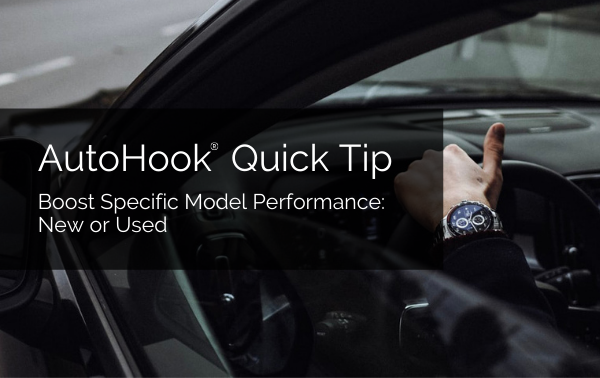Most dealers close between twenty to thirty percent of the leads submitted through their own website. With that kind of close rate, its no wonder the prevailing wisdom is the more leads you can get, the better. To a certain extent, this is true, but the quality of your leads is even more important than the quantity of leads. The more high-quality leads you get, the higher your show rates will be and the higher your close rates will be.
So how do you get more high-quality leads? Here's a step-by-step guide to formulating a winning lead strategy:
- What geographical areas do you want to draw customers from? Most dealers have a pretty good idea of where most of their customers reside. If you don't, your dealership management system (DMS), sales data heat mapping, and market share reports can give you that information. Use geo-targeted marketing solutions for your website, mobile advertising, and other targeted marketing opportunities to execute against those opportunities.
- Who is your target market? "Profiling" is a bad thing if you're on the police force, but business owners know that developing profiles of their prototypical customers is a helpful exercise. This requires a little more thought than defining a geographical territory. Delve a little deeper and segment customers by gender, age group, income level, occupation and other characteristics. Develop six "personas" or profiles of your typical customers, such as "woman in her 30s with two small kids and works in the finance industry." Then sketch out what their daily routines may be like, where they commute, where they shop and where they get their news. Places you identify in your customer profiles may be good places to target with marketing campaigns.
- How many Internet sales consultants do you have? This is pretty straightforward. How many people on your staff are trained to handle your leads and are held accountable for following up? Set them up for success instead of inundating them with opportunities for failure.
- How many Internet leads should you be getting? For every Internet salesperson, figure that 80 to 100 leads per month is a reasonable figure for them to handle. Multiply the number of salespeople you have by 100, and that should be your monthly lead goal.
- Knowing your lead goal, how many website visitors do you need? If your website is optimized for conversion, you should be averaging a five percent conversion rate. So if you want 500 quality leads every month, you'll need 10,000 website visitors every month.
- Identify lead sources by traffic, volume, show and close rates. Which marketing channels deliver most of your website traffic? How many from your latest SEM campaigns, email marketing campaigns, digital advertising, social media, etc.? In addition to the volume of website visitors, calculate the conversion rates, show rates and close rates from each lead source. Just because one channel is delivering a lot of traffic doesn't mean you should allocate more budget to that channel unless the leads are closing at a rate of 20 percent or better.
- Allocate your budget. Adjust your marketing budget according to the best-performing lead sources. The higher the show and close rates a lead source delivers, the more you should allocate to that channel. As long as the source continues to deliver the same show and close rates, try increasing the budget a little bit every month. At some point, increasing the budget will not deliver a higher volume of leads and the show and close rates may stabilize. At that point, continuing to increase the budget isn't necessary.
- Turn leads into shows. What are your dealership’s established processes? Your lead follow-up process should be written down and copies should be posted on every sales associate's desk so they are reminded on a daily basis how important it is to follow the process. Ideally 25 to 30 percent of your leads will turn into shows but the national average is 17%. Focus on this metric. It will dramatically change your ROI.
- Require accountability. How do you measure whether processes are being followed? A system of accountability needs to be set up with one person in charge who will hold salespeople accountable. Inspect what you expect.
- Analyze results and change as necessary. Once you have a winning lead strategy, analyze results on a monthly basis. As the market changes, as the seasons change, as consumers’ preferences change, so might your lead strategy. Keep a close eye on the Key Performance Indicators (KPIs) from each of your marketing channels and make adjustments when you see the numbers change.
Every dealership is different, so there's no set formula for a winning lead strategy. Some trial and error and experimenting with new lead sources may be necessary before you finally come up with a strategy that delivers. How do you formulate your dealership's lead strategy? What are your favorite tips for increasing website traffic, lead conversion rates, show rates and close rates?
# # #


















